Things Don't Always Go As Planned
If there's one thing that's certain, especially in travel, it's that you never know what to expect when you are in a different country. Today was supposed to be a half day, private guided tour of Cochin, but as luck would have it, there were some political situations and rallies that prompted the government to declare a "band" (literally meaning "closure") in the State of Kerala. Schools were closed, businesses were closed, and there were no cars allowed on the road from 6am-6pm. To top it off, since my guide was coming from outside the area, he had to cancel as he couldn't drive to get to me. Luckily, my local touring company did an outstanding job of finding a new guide within Fort Cochin area at the last minute so I could do a walking tour.
As I mentioned on my Facebook Live post this morning, I think there's no better way to see a place than by walking through it's streets. You can use all your senses to really get a better understanding of the people and culture. So, there's always something positive that comes out of a seemingly bad situation. You may not be able to choose the circumstances, but you can certainly choose how you react to them. Having a great attitude and learning to "go with the flow" is essential in travel. It can make the difference between a great trip and one that leaves you feeling drained and annoyed. I'm a planner myself, so this "stay loose and go with the flow" idea is something I'm working on as well. I have a feeling this trip will give me plenty of opportunity to practice!
As I mentioned on my Facebook Live post this morning, I think there's no better way to see a place than by walking through it's streets. You can use all your senses to really get a better understanding of the people and culture. So, there's always something positive that comes out of a seemingly bad situation. You may not be able to choose the circumstances, but you can certainly choose how you react to them. Having a great attitude and learning to "go with the flow" is essential in travel. It can make the difference between a great trip and one that leaves you feeling drained and annoyed. I'm a planner myself, so this "stay loose and go with the flow" idea is something I'm working on as well. I have a feeling this trip will give me plenty of opportunity to practice!
History and Culture Abound
Cochin, specifically the Fort Cochin area, has so much historical significance and there are some key areas that are worth seeing. Staying within Fort Cochin allowed me to be essentially unaffected by the strike since I could walk to many of the sights. My guide Eugin and I started by walking along the beach path to see the Chinese fishing nets, where I not only watched the fisherman put on a show for tourists but also got to jump in and "help" them pull in the catch from the nets. Of course, this technique is no longer used today since the wooden fishing boats and the larger vessels bring in the catch of the day from deep in the ocean, but it's a great way for tourists to see an ancient tradition in practice.
Walking also allowed me to mingle with the local people, whether that be the merchants in the fish market or the kids who took advantage of their day off to start a pick up game of cricket. I also had an opportunity to see the local Dhobi Khana, or laundry facility, which provides a place for those once considered to be in the lowest social class to earn a living. I was surprised at the preservation of the old traditions of doing laundry by beating the clothes against a rock or other hard surface to drain the water from them (consider this a manual "spin cycle"). These clothes are then hung outdoors on clothes lines to dry and pressed and folded by hand. The business comes sometimes from local hotels or the neighborhood residents. However, I'm told the younger generation has no interest in this trade and would rather get a professional job (Kerala has the highest literacy rate in the country, over 95%), so this tradition could go by the wayside in the coming years.
Although the walking tour allowed me to get some exercise and fresh air, it was so humid I literally could feel the perspiration sliding down my back. I noticed a Relais & Chateau hotel that I had heard about so I took the opportunity to rehydrate, duck in and meet the General Manager for an impromptu tour of the place. It's really important for me to see as many options for accommodations as possible when I'm in a city. No two clients are alike and there is no "one-size-fits-all" hotel. I like to be able to make suggestions based on a client's specific preferences. After I had a chance to hydrate and cool off a bit, I was back on track and ready for the next stop.
People and Places from the Spice Trade
There are many European influences in Fort Cochin from the times of the spice trade. The Portuguese were the first to discover the sea route to India, followed by the Dutch and eventually the British. They brought with them not only their architecture but their religion as well. Of the 32.5 million people in the state of Kerala, 15% are Christian. Of the numerous churches in Cochin, there are two major ones in Fort Cochin, the St. Francis Church and the Santa Cruz Basilica.
The St. Francis Church is the oldest European church in India, built in 1557 by the Portuguese. Vasco da Gama restored it with coconut wood and thatched roofs and practiced his Roman Catholic faith here. He also died in Cochin and was initially buried in the church. His remains were later taken to Lisbon by his son and the site is now marked by stone and a brass railing.
When the Dutch took over the Church, they converted it to their Protestant beliefs and renovated it to a stone structure. The British arrived and added the tin roof and their Anglican way of worship. Today, the church still has Sunday service in both English and Malayalam and their choir is well known to the locals. It's also called the "musical church" because of the melodies made by the tin roof during the monsoons.
The Santa Cruz Cathedral Basilica was originally built in 1557 by the Portuguese and elevated to a Cathedral in 1558 and later a Basilica by Pope John Paul in 1984. It's one of eight Basilicas in Kerala and considered a heritage site here.
Another group that fled Europe ,due to persecution, were the Jewish people. When they arrived in Cochin, the raja gifted them a piece of land to develop as their colony. It's known locally now as "Jew Town". The Jewish Synagogue is in the heart of it and it's also known for it's shops, mainly targeting tourists with souvenirs, and spice markets.
The St. Francis Church is the oldest European church in India, built in 1557 by the Portuguese. Vasco da Gama restored it with coconut wood and thatched roofs and practiced his Roman Catholic faith here. He also died in Cochin and was initially buried in the church. His remains were later taken to Lisbon by his son and the site is now marked by stone and a brass railing.
When the Dutch took over the Church, they converted it to their Protestant beliefs and renovated it to a stone structure. The British arrived and added the tin roof and their Anglican way of worship. Today, the church still has Sunday service in both English and Malayalam and their choir is well known to the locals. It's also called the "musical church" because of the melodies made by the tin roof during the monsoons.
The Santa Cruz Cathedral Basilica was originally built in 1557 by the Portuguese and elevated to a Cathedral in 1558 and later a Basilica by Pope John Paul in 1984. It's one of eight Basilicas in Kerala and considered a heritage site here.
Another group that fled Europe ,due to persecution, were the Jewish people. When they arrived in Cochin, the raja gifted them a piece of land to develop as their colony. It's known locally now as "Jew Town". The Jewish Synagogue is in the heart of it and it's also known for it's shops, mainly targeting tourists with souvenirs, and spice markets.
Kathakali

As I mentioned earlier, the arts play a large role in the Fort Cochin area. Tonight I had the privilege of seeing a local company put on a Kathakali performance depicting a scene from the Sanskrit epic, Ramayana. I arrived early enough to see the cast put on their own makeup (even the female characters are played by male performers) and learn about the highlights of this classical Indian dance. Essentially, there are no words during the performance-all the emotions are conveyed by a series of facial expressions and body movements. It was fascinating to watch, but luckily we had a cheat sheet of the play and a translation of the segment that was depicted.


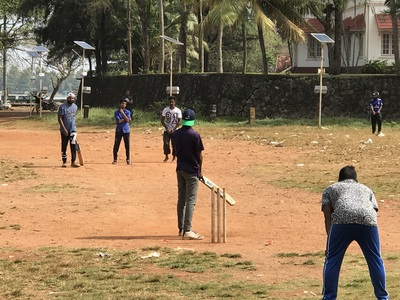

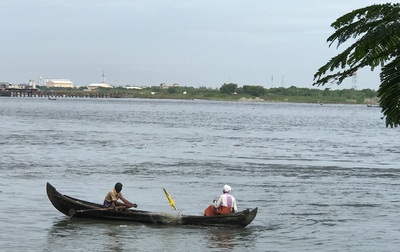

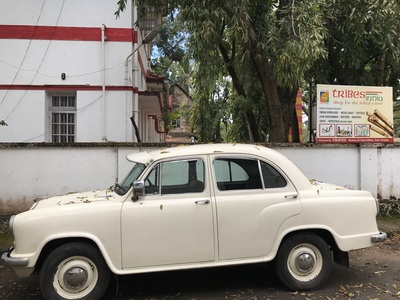




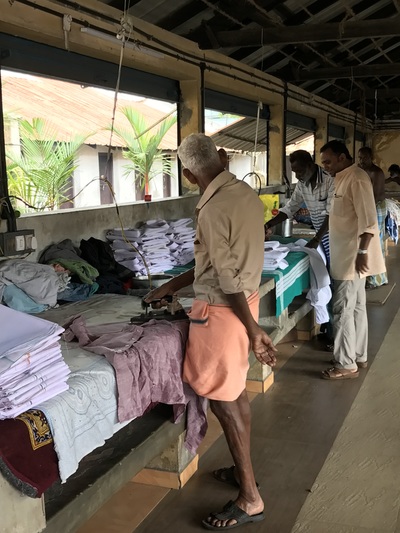
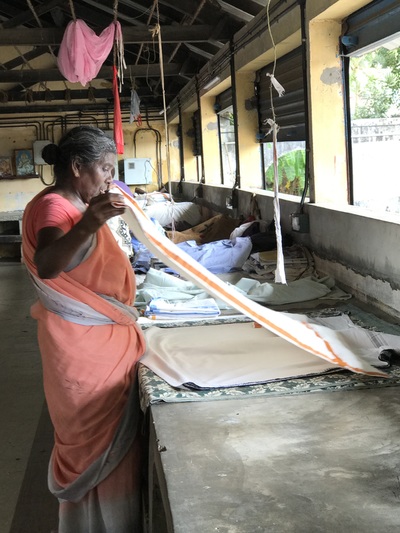


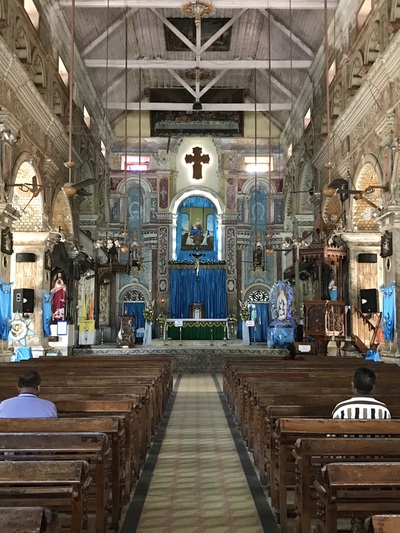
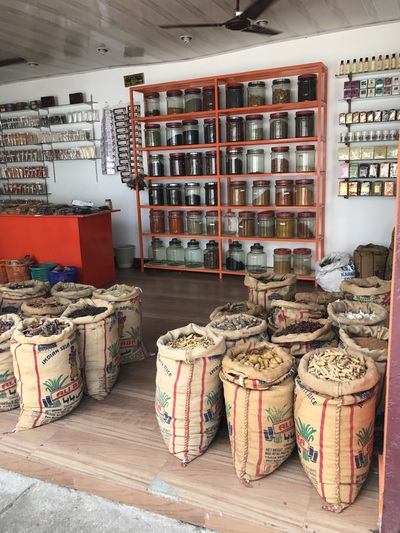

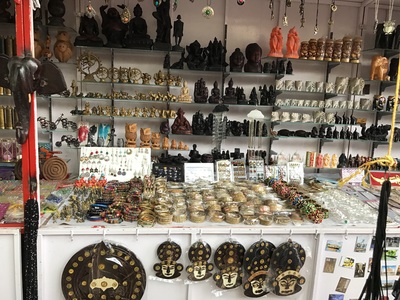

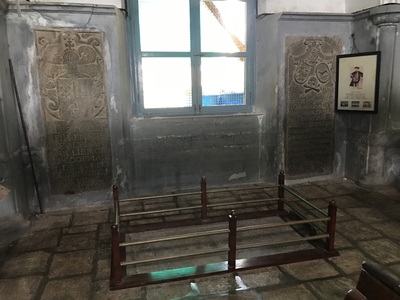
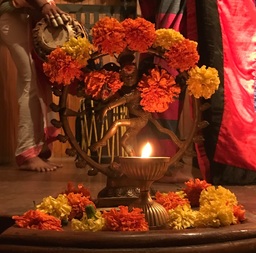
 RSS Feed
RSS Feed